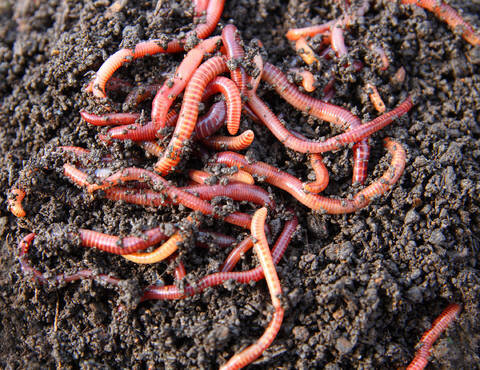Whatever You Required to Learn About Red Wigglers for Composting
Red wigglers, or Eisenia fetida, play a critical role in the world of composting, transforming natural waste right into useful dirt amendments. The process of setting up a worm bin and keeping it can pose difficulties.
What Are Red Wigglers?

(red wiggler farming)
Belonging To The United States and copyright, red wigglers are surface-dwelling microorganisms that choose wet, warm environments rich in decaying raw material. Their diet consists mostly of decaying plant material, food scraps, and other organic particles, which they consume and damage down effectively. As they absorb this product, they create nutrient-rich castings that improve soil fertility.
Red wigglers are hermaphroditic, having both male and women reproductive organs, and can duplicate rapidly under ideal conditions. This ability makes them a perfect choice for composting systems, as their population can boost rapidly. Their durability and flexibility to various settings further solidify their importance in lasting waste administration methods. Overall, red wigglers are crucial factors to the procedure of recycling organic waste into important compost.
Advantages of Making Use Of Red Wigglers
Using red wigglers in composting systems uses countless benefits that boost both the effectiveness of waste administration and the high quality of the resulting compost. These worms, scientifically understood as Eisenia fetida, are especially efficient at damaging down organic issue, turning cooking area scraps and yard waste into nutrient-rich garden compost at an increased price.
One of the primary advantages of using red wigglers is their capability to take in large quantities of natural material, often processing their weight in food waste daily. This high intake rate brings about much faster disintegration and lowers the volume of waste sent to landfills. The castings created by red wigglers are abundant in necessary nutrients, useful bacteria, and enzymes, making them an exceptional plant food for gardens and plants.
In addition, red wigglers flourish in a range of atmospheres, making them versatile for both indoor and exterior composting systems - red wigglers. Their presence in a garden compost container helps to aerate the product, protecting against smells and advertising a healthy composting process. In general, using red wigglers not only adds to reliable waste management but also supports lasting horticulture techniques with the production of top quality garden compost
(eisenia fetida worms for sale)
Establishing Your Worm Container
To efficiently establish up a worm bin, it is necessary to select an ideal container that satisfies the needs of red wigglers while providing a favorable setting for composting. An appropriate bin can be made from plastic, timber, or steel, with a capacity of at least 1 square foot for every single extra pound of worms.
Guarantee the container has appropriate water drainage openings to avoid excess dampness, as red wigglers grow in a wet, however not waterlogged, atmosphere. red wigglers. The container ought to also be aerated to offer adequate airflow, avoiding anaerobic conditions this article that can hurt the worms
A suitable location for the worm bin is a cool, dark location, without direct sunshine and severe temperatures, as red wigglers like a temperature series of 55 to 77 degrees Fahrenheit.
Prior to introducing the worms, prepare bed linen products such as shredded paper, cardboard, or coconut coir, which will give both environment and food. Dampen the bed linen gently to create an inviting setting for the worms. Consider positioning a lid on the container to maintain humidity and decrease pests, while ensuring it can be conveniently removed for maintenance.
Feeding and Treatment Standards
Feeding red wigglers is a crucial facet of maintaining a healthy composting system. These worms flourish on a diverse diet plan, primarily composed of natural materials such as vegetables and fruit scraps, coffee premises, and smashed eggshells. It is necessary to avoid feeding them meat, milk, and oily foods, as these can create undesirable smells and bring in pests.
When presenting food to your worm container, chop or shred materials right into smaller pieces to facilitate quicker decomposition. Begin with percentages to evaluate the worms' usage rate, progressively boosting the amount as they adapt. It is suggested to alternating feeding locations within the bin to motivate extensive blending and aeration of the garden compost.

Troubleshooting Common Issues
Preserving a flourishing worm composting system can in some cases offer difficulties that need focus and troubleshooting. Typical issues include an undesirable odor, which frequently shows overfeeding or the existence of anaerobic conditions. To fix this, lower the amount of food added and guarantee correct oygenation by blending the bed linens product.
One more frequent problem is the getaway of worms from the bin. This can happen as a result of too much moisture or unsuitable environmental problems. Regularly check the wetness degrees, going for a moist but not soggy uniformity, and maintain ideal temperature levels in between 60-80 ° F(15-27 ° C )to create a comfy environment for your red wigglers.
Pests, such as fruit flies, can additionally attack worm bins. red wigglers. To fight this, cover food scraps with a layer of bed linen or shredded paper to hinder flies from laying eggs. Additionally, ensure that any kind of food included is fresh and cost-free from mold and mildew, which can bring in unwanted bugs
Lastly, if your worms appear inactive, check for stress variables such as temperature changes or inadequate wetness. Attending to these typical issues will certainly help keep a healthy and effective worm composting system.
Conclusion
In recap, red wigglers, or Eisenia fetida, play an essential function in sustainable waste monitoring through vermicomposting. Appropriate setup and upkeep of a worm container, along with adherence to feeding standards, guarantee a thriving community that lessens landfill contributions.